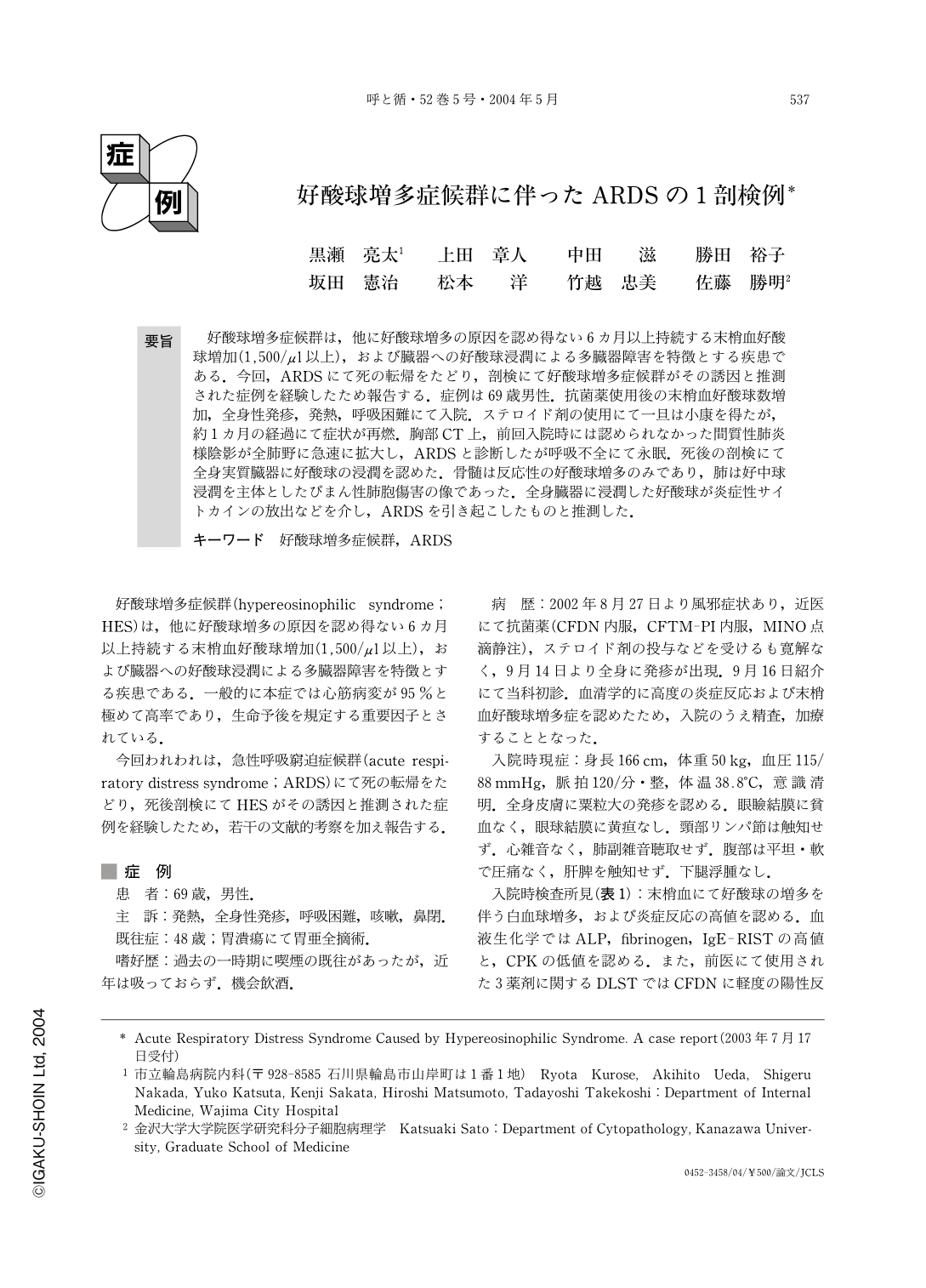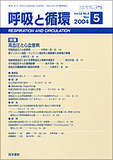Japanese
English
- 有料閲覧
- Abstract 文献概要
- 1ページ目 Look Inside
要旨
好酸球増多症候群は,他に好酸球増多の原因を認め得ない6カ月以上持続する末梢血好酸球増加(1,500/μl以上),および臓器への好酸球浸潤による多臓器障害を特徴とする疾患である.今回,ARDSにて死の転帰をたどり,剖検にて好酸球増多症候群がその誘因と推測された症例を経験したため報告する.症例は69歳男性.抗菌薬使用後の末梢血好酸球数増加,全身性発疹,発熱,呼吸困難にて入院.ステロイド剤の使用にて一旦は小康を得たが,約1カ月の経過にて症状が再燃.胸部CT上,前回入院時には認められなかった間質性肺炎様陰影が全肺野に急速に拡大し,ARDSと診断したが呼吸不全にて永眠.死後の剖検にて全身実質臓器に好酸球の浸潤を認めた.骨髄は反応性の好酸球増多のみであり,肺は好中球浸潤を主体としたびまん性肺胞傷害の像であった.全身臓器に浸潤した好酸球が炎症性サイトカインの放出などを介し,ARDSを引き起こしたものと推測した.
Summary
Hypereosinophilic syndrome(HES) is a disorder affec-ting multiple organ systems and is caused by infiltration of tissues by mature eosinophils. We describe the case of a patient in whom acute respiratory distress syndrome(ARDS) developed. The clinical course and the autopsy findings suggested HES as the cause.
A 69-year-old man was hospitalized with high fever, systemic rash, cough, dyspnea, and eosinophilia. He had been prescribed some antibiotics in the clinic that he had consulted a few days previously. There was no definite history of his having taken these drugs previously.
Results of routine laboratory chemical, microbiological, hematological, and viral studies were within normal limits.
His general condition didn't improve after discontinuance of these drugs, so treatment with intravenous methylprednisolone was started. Immediatly after this, signs and symptoms were diminished, but nasal congestion continued.
However, the symptoms recurred one month later, and he was readmitted to hospital. A chest computed tomography scan revealed a focal interstitial pattern, which subsequently extended rapidly to the whole pulmonary area. Bronchoscopy showed mucoid impaction and all-pervading redness of the bronchi. A diagnosis on ARDS was made at this point, but the patient's general condition worsened daily and, in spite of assisted ventilation, he died of respiratory failure.
Autopsy revealed infiltration of parenchymatous organ tissues by mature eosinophils, but there was no tumorous proliferation of myelocytes in the bone marrow. Lung tissue showed diffuse alveolar damage(DAD), which supported the clinical diagnosis of ARDS. Inflammatory cytokines and/or other chemical mediators released from eosinophils were suspected to be the cause.

Copyright © 2004, Igaku-Shoin Ltd. All rights reserved.


